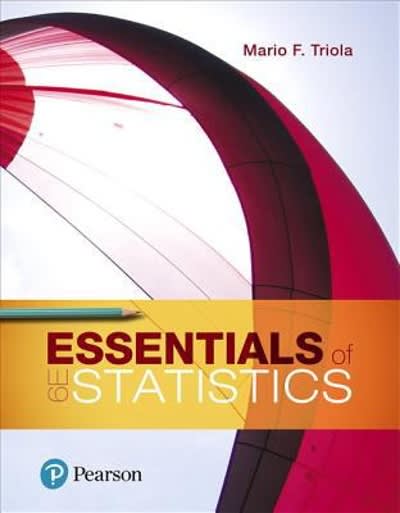Gregor Mendel conducted original experiments to study the genetic traits of pea plants. In 1865 he wrote
Question:
Gregor Mendel conducted original experiments to study the genetic traits of pea plants. In 1865 he wrote “Experiments in Plant Hybridization,” which was published in Proceedings of the Natural History Society. Mendel presented a theory that when there are two inheritable traits, one of them will be dominant and the other will be recessive. Each parent contributes one gene to an offspring and, depending on the combination of genes, that offspring could inherit the dominant trait or the recessive trait. Mendel conducted an experiment using pea plants. The pods of pea plants can be green or yellow. When one pea carrying a dominant green gene and a recessive yellow gene is crossed with another pea carrying the same green/yellow genes, the offspring can inherit any one of these four combinations of genes:
(1) Green/Green;
(2) Green/Yellow;
(3) Yellow/Green;
(4) Yellow/Yellow. Because green is dominant and yellow is recessive, the offspring pod will be green if either of the two inherited genes is green. The offspring can have a yellow pod only if it inherits the yellow gene from each of the two parents. Given these conditions, we expect that 3/4 of the offspring peas should have green pods; that is, P(green pod) = 3/4. When Mendel conducted his famous hybridization experiments using parent pea plants with the green/yellow combination of genes, he obtained 580 offspring. According to Mendel’s theory, 3/4 of the offspring should have green pods, but the actual number of plants with green pods was 428. So the proportion of offspring with green pods to the total number of offspring is 428/580 = 0.738. Mendel expected a proportion of 3/4 or 0.75, but his actual result is a proportion of 0.738.
a. Assuming that P(green pod) = 3/4, find the probability that among 580 offspring, the number of peas with green pods is exactly 428.
b. Assuming that P(green pod) = 3/4, find the probability that among 580 offspring, the number of peas with green pods is 428 or fewer.
c. Which of the two preceding probabilities should be used for determining whether 428 is a significantly low number of peas with green pods?
d. Use probabilities to determine whether 428 peas with green pods is a significantly low number.
Step by Step Answer:






